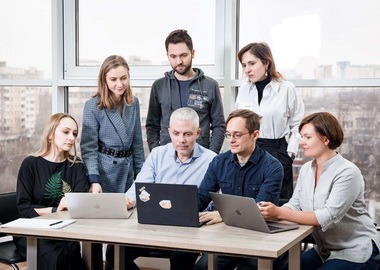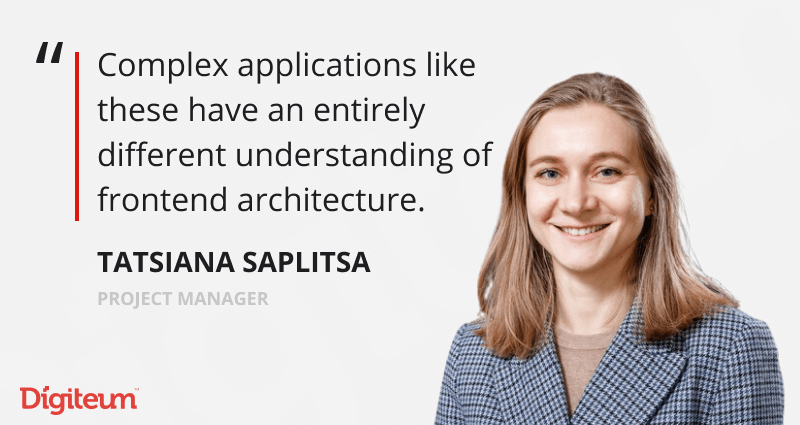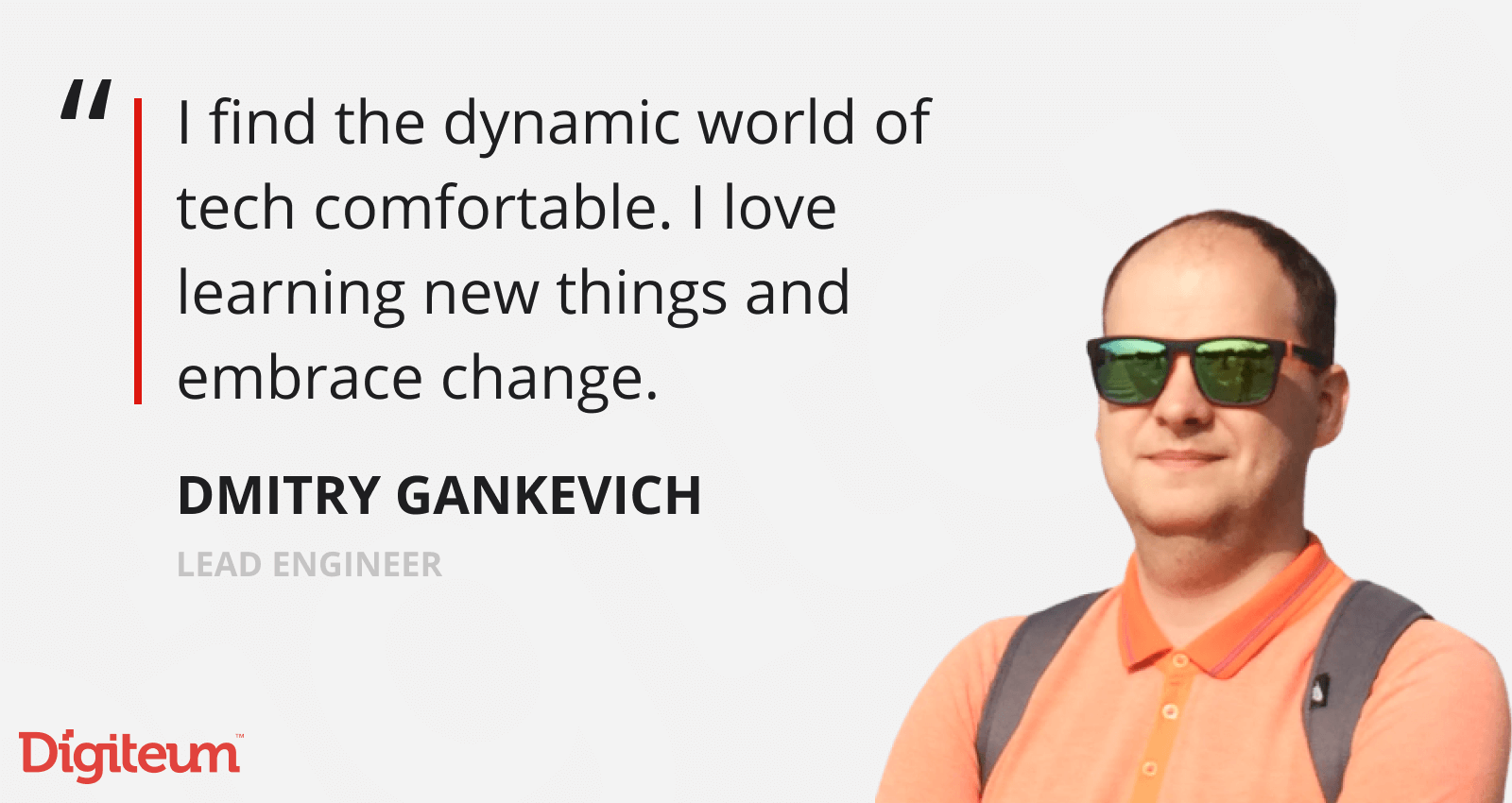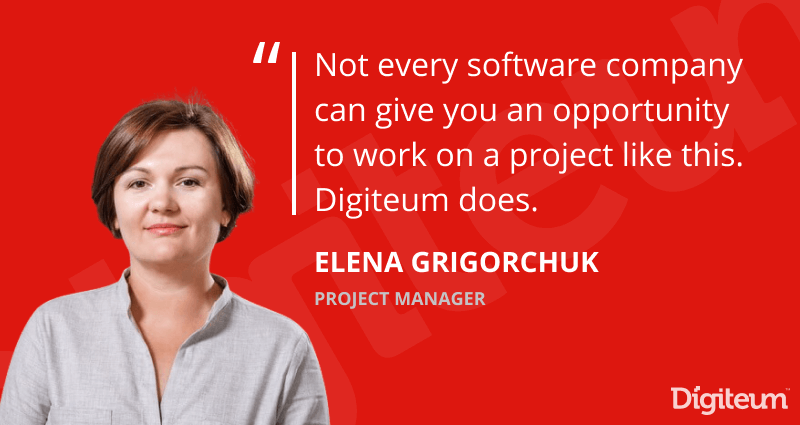Digiteum Talks: The Art of Leading Projects and Teams at Digiteum
IT Project Management is a great balancing act. You have to be a little bit of this and a little bit of that, make sure everything is under control without being too controlling. And you always learn only to find out there’s still so much to learn.
IT Project Management is for the tough ones. We’ve asked Digiteum PMs what it’s like to master this great balancing act, lead teams with dozens of specialists and projects that last for decades.
If you happen to be or want to be a part of these teams, read on. You’re about to acquire precious inside information and get to know your (future) manager better.
What does it mean to be a Project Manager at Digiteum?
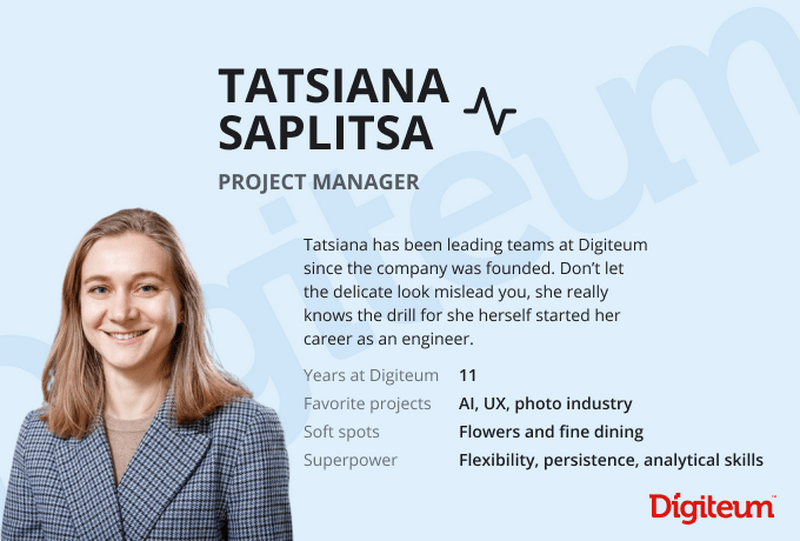
Tatsiana: In a word, a Project Manager is a mediator between three teams: an engineering team, our client and Digiteum management. My goal is to create the conditions for all the stakeholders to be happy. Clients should get the results they want. Note that sometimes it is not necessarily what they came for initially, but we make sure all their expectations are met. Tech teams should enjoy and feel comfortable working on the project. And Digiteum management is confident that people on both ends are satisfied — the team and the client are happy with the project and its progress.
To make this happen, Project Managers have to take different roles. I’m always a BA and PM on my projects. Often, clients come to us with unfinished designs. In a case like this, I step in also as a UX specialist at the first phase — analyze the design we have, see how to make the best of it and suggest improvements if needed. Rarely, I do testing when the project is small or we are dealing with post-launch fixes and a QA engineer who originally worked on the project is no longer available.
Maxim: PM is always a problem-solver on a project. You have to deal with things coming from all over and respond promptly. In my case, for instance, I sometimes can do a small thing like changing a line of text on the webpage without getting a developer involved.
Olga, you manage the project for Oxford Languages which requires unique language expertise. Is it the same for you?
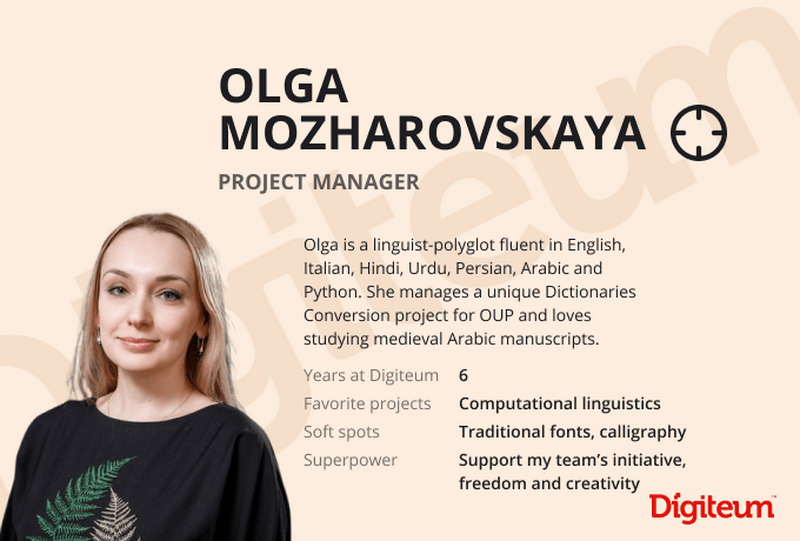
Olga: I was lucky to get on a project that aligns both with my training and personal interests. Sometimes we indeed need unique hard-to-find expertise in rare languages. So yes, you have to be an Analyst or even a QA specialist. It also means that you must always be on top of a tech wave in things like text processing.
Lena, earlier we had an interview with your team and you talked about balancing things while being a Scrum Master on a project.
Elena: True, I’ve worked as a Project Manager on most of my projects at Digiteum. Right now I’m a Scrum Master on a large project for Diaceutics. Even though these two roles may seem similar, they are conceptually different.
PM is responsible for deadlines, budget, coordinated work among teams, and maintains communication between stakeholders, including clients and vendors. Scrum Master is fully integrated into the team and development process. My key goal is to facilitate the Agile process and make sure people in my team have everything they need to fully develop their potential.
By default, the Agile team does not need to be supervised — there are well-established processes, and engineers are capable of making their own tech decisions. On the contrary, Scrum Master creates a favorable environment for productive work and makes sure all Agile rituals are implemented. I agree, you need to be a problem solver and see that everyone is on the same page. It requires mindfulness and a certain physiological approach. This is a very interesting experience for me personally.
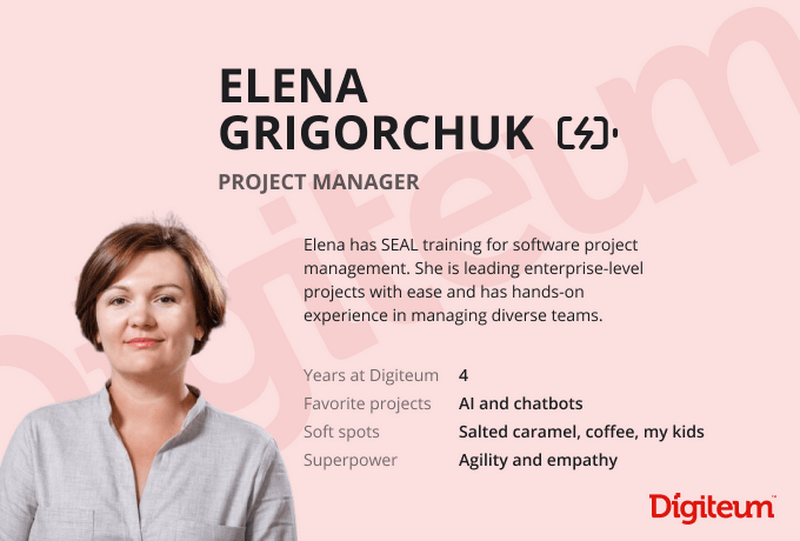
How do you make it happen? How do you build trust, establish communication in the team? Are there any tricks or techniques?
Elena: This is not something you can push over — you can’t assign trust. But you can develop it over time. For example, we encourage open and trustful communication during Agile rituals. When we discuss sprints during Retrospective, we always stick to No Blame No Shame rule. It creates an atmosphere of trust and respect and gives people the ability to openly talk about issues and solve them as soon as possible. In my opinion, this is the right way to naturally build trust between people.
Tatsiana: I agree, you can’t just ask people to trust each other. Trust in teams is built up with time, including by practicing the No Blame No Shame principle. It can be hard in some cases, but you have to keep your emotions in check so that people don’t shut you out.
When it comes to developing trust between the company and clients, it primarily relies on our ability to deliver what we have promised, or sometimes even more. These things also take time.
Maxim: I would add that transparency helps raise trust, especially on the client side. Our clients know what the team is doing at a given time, know about our current challenges. It also nurtures trust. At the same time, open communication and knowledge sharing are important for building relationships within the team.
Olga: There are tools that help us maintain transparency and openness on a project. Using these tools, stakeholders can review project status and monitor different aspects and tasks in real time. Even when something goes off, clients know we are on it and can see what exactly we are doing right now to get back on track.
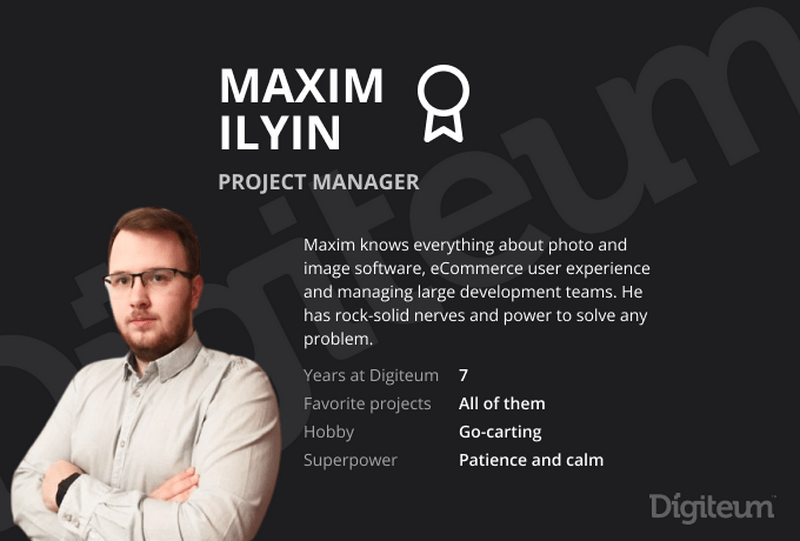
You work on projects across different industries. How do you dive into a new domain and how do you introduce a new industry or niche to your team?
Tatsiana: I usually start with competitor analysis. I learn what other companies do, what products and features they offer. Moreover, when we build a product from scratch, regardless of its domain, competitor analysis is essential. You need to learn how things work, know about certain standards and user expectations before planning your next steps. Innovation is important, but it’s even more important to respond to user needs and understand the logic people are used to.
Then, I can share what I’ve learned or already know with the team. For instance, right now we work with two photo labs. When I need to explain how certain features or functionality should work or talk about best practices, I can easily dig up a good example from our experience.
Of course, if the industry is absolutely new, we ask clients a lot of questions, especially at the beginning. We find out who has industry knowledge on the client side and could show us how things work in their domain.
Olya, your work on a niche project. How do you deal with knowledge transfer?
Olga: Our project revolves around dictionaries conversion which relates directly to data processing. Data processing, in turn, is a fast-emerging and promising field, and it’s easy to find interesting and useful material on it. So I usually suggest starting with it first.
Maxim: I would say that no matter what field you dive in, you most probably will find something that relates to your previous experience. You can learn from the team, from your client, and there’s usually a lot of information available to start off.
Elena: The client I work with right now is very interested in making all project-related information available for the teams. We have strong marketing and product teams on our project and a special hub where you can find everything you need to know about the product and its evolution. There are videos, manuals, marketing materials that explain the things we do and how they work. When new people join the team, I can easily provide them with important information and refer to the people they can talk to about the product, features and further development.
What about tech knowledge? Are there any practices to share tech expertise, training or something like this?

Tatsiana: We don’t have a hub on my projects, I love the idea though. However, we have Vitalik (Vitaliy Leschenko, .Net Engineer at Digiteum) who is very keen on sharing tech knowledge and expertise and has the right training for it. Recently, we have kicked off in-house workshops in the company with a lecture on UX testing.
Elena: We have plenty of inside events on our project such as Lunch and Learn Meetups, for example. There are regular get-togethers for different teams and even large events like Townhall Meeting for like 100-200 people.
At first, when I just started working on the project, I tried to take part in every event which was impossible — there are so many. Later I figured out what is useful for me. In general, management encourages self-development and education. The second half of our Fridays are dedicated to learning and can be fully devoted to educational events and training. Our Head of Engineering is also very eager to share knowledge and his expertise.
Tell me about your processes. Maxim, you work with the client who has been with Digiteum since 2010. Do you have a time-proven process in place?
Maxim: We have a well-established process that can be flexible if needed. This is the beauty of Agile. It allows us to quickly respond to changes and adjust. For instance, we may have a 2-week sprint followed by a 4-week sprint, then back to two weeks. It depends on the current reality and project requirements. Normally, a well-established process benefits everyone — engineers, clients and managers, of course.
Tatsiana: We always adjust our process to client requirements. As a rule, we start with a generic approach and then, depending on the client’s needs, we can tweak it. Maxim is right — it’s impossible to build a default process that would be 100% perfect in every situation. It has to change over time, adapt.
One thing I can tell you for sure: a well-established process makes the life of a Project Manager so much easier.
What do you like about working at Digiteum?
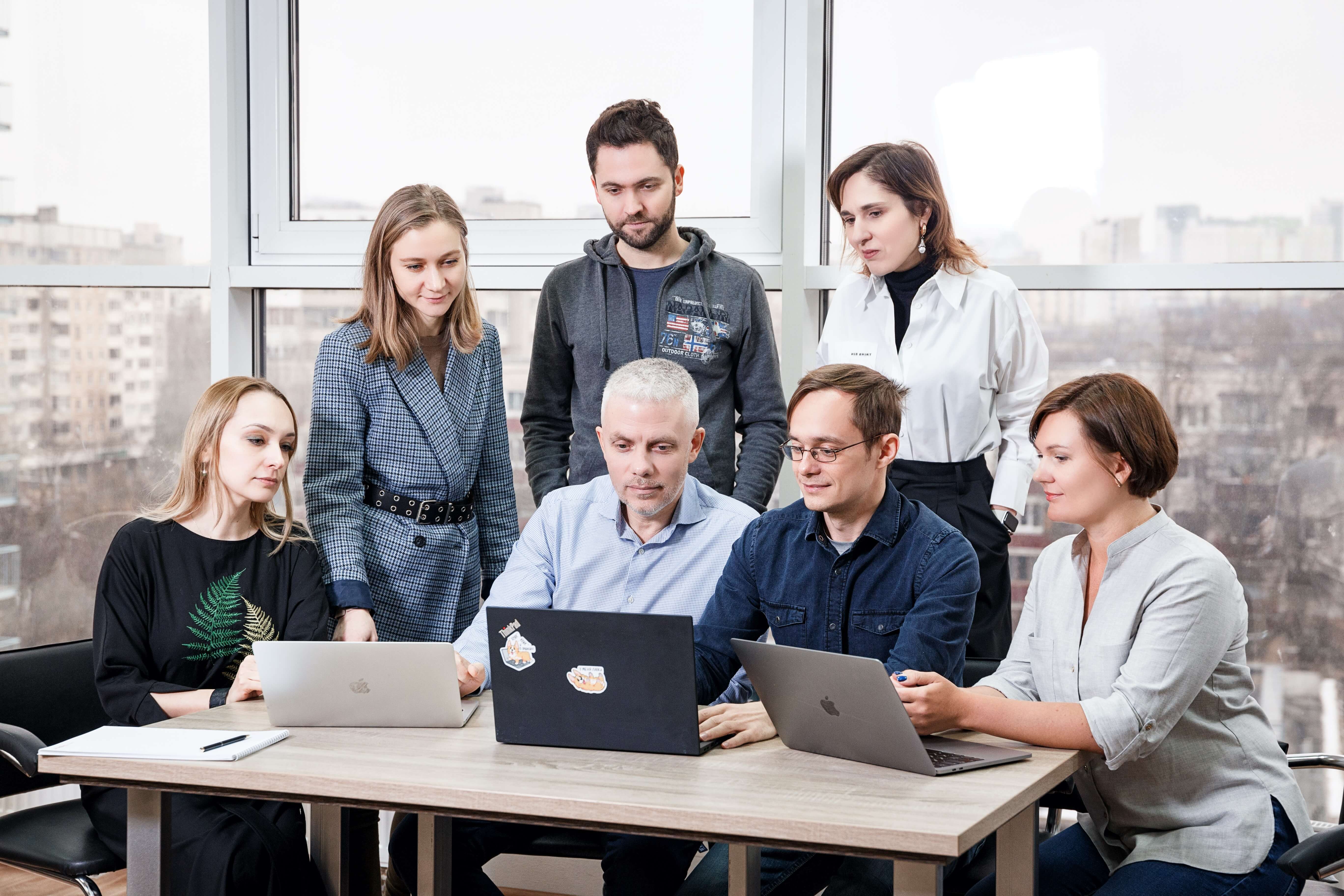
Olga: Metaphorically speaking, a company is a family. Traditionally, there are two major family models — a strict father model and a nurturing parent model. Digiteum is definitely a nurturing parent model which is associated with prompt feedback, support and focus on growth.
Maxim: I love the flexibility. There’s no bureaucracy which means that everything can be solved fast and easily and you always get the feedback you need. And of course, our warm informal environment.
Elena: I would like to single out our projects. I had a chance to work on very different and inspiring projects at Digiteum. For example, I worked on a hardware project not so long ago, tried chatbots — it was new to me. There’s a huge Oxford project which is incredibly complex from a domain perspective, and there are many other strong web projects right now.
I suppose this is a part of the company’s policy. We have a solid quality portfolio and a strong tech stack. And of course, it would never be possible if not for our track record.
Tatsiana: I can only agree and add that apart from diverse projects, we also get to try different roles and never get sucked into the routine of repetitive daily tasks. Every new project brings its own set of responsibilities and excitement which keeps you going.
One can only guess what new adventures, challenges and victories lay ahead as we rapidly grow in two locations — Gdansk and Minsk — at once. Thank you for such an inspiring talk, guys! Looks like you all, each in your own way, have mastered the art of Project Management.
We encourage everyone who feels this vibe and wants to work with these folks and their teams to check our Career page or contact us directly at [email protected] to learn about open job opportunities.


